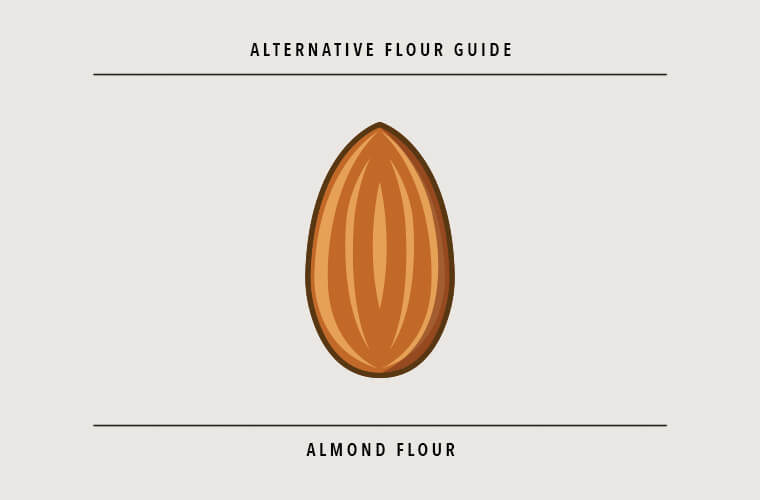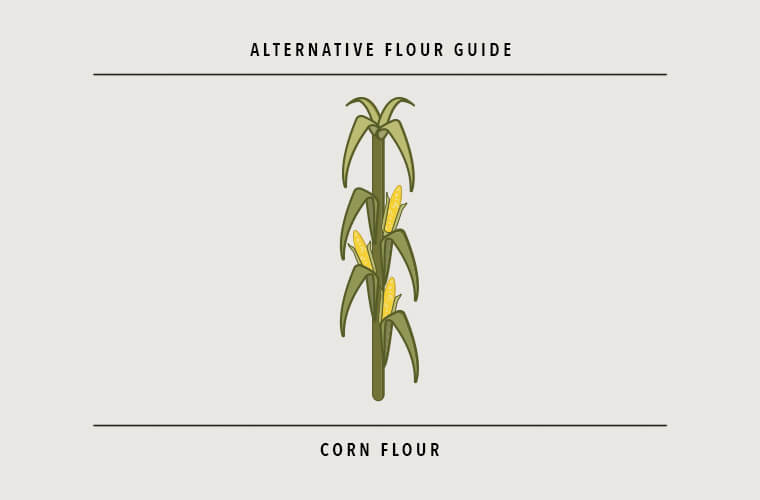5 Gluten-Free Flours to Help You Bake Like a Pastry Chef
"Each [substitute] has a unique profile that it brings to cooking and baking," says The Bojon Gourmet founder Alanna Taylor-Tobin, a trained pastry chef who discovered she had a sensitivity to gluten 12 years ago.
Taylor-Tobin—who proclaims, "I love grains, I love flour, I love bread" (agree!)—did not give up on carbs, though. She went to school on the alternatives—and discovered that alternative flours can differ dramatically in weight, absorbency, starch, protein, and fiber contents—which makes a huge difference in baking, she says. (One cup of oat flour, for example, weighs about 20 grams less than a cup of almond flour, so swapping out one for the other would be a disaster.)
Once she figured out the gluten-free good stuff, she put her pastry chef hat back on, and got seriously creative. "Baking with alternative grains opened up a whole new feast of flavors, textures, and colors that I never new existed," Taylor-Tobin writes in her new book, Alternative Baker, which is filled with delicious dessert recipes—without using even a spoonful of regular flour.
Ready to get your baking game on? Start with these 5 gluten-free flours.
1. Almond flour
Why you need it: Ground from raw nuts, almond flour is high in protein, vitamins, calcium, fiber, and good-for-you fats, making it the most nutrient dense of all. "It bakes up smooth, mild, and light in color, and its high protein content handily replaces the missing proteins in gluten-free baking," Taylor-Tobin raves about the neutral flour. Added bonus? Almond flour is Paleo-friendly.

{{post.sponsorText}}
When to use it: "Almond flour has a nutty flavor, so be prepared for that," Taylor-Tobin warns. It goes particularly well with stone fruit (fun fact: almonds and stone fruit are related), citrus, and chocolate. Almond flour also holds together well, making it a good fit for tart crusts and crumble toppings. If the recipe doesn't explicitly call for almond, Taylor-Tobin recommends swapping 30 percent of flour for this alternative. Or, if you're Paleo, you can swap it in 1:1, but expect a dense, chewy texture. And just be extra careful not to serve it to anyone with a nut allergy!
Expert tip: Store almond flour in the refrigerator—it can turn rancid if left at room temp.
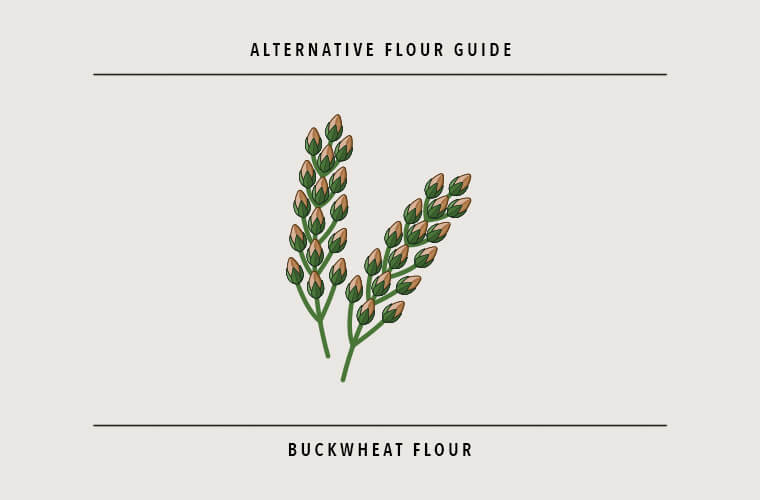
2. Buckwheat flour
Why you need it: According to Taylor-Tobin, buckwheat flour's texture makes it a standout. "It's very smooth," she says. "You don't get any sandy grittiness." Buckwheat is also rich in protein and minerals like iron, and contains lysine, an amino acid that may fight off cold sores. But the taste also makes it an all-star substitute. "Buckwheat flour has a robust flavor component," Taylor-Tobin explains. "I think of it as not just a flour, but a spice."
When to use it: Buckwheat flour may be delicious, but be prepared for its nothing-if-not-assertive flavor and charcoal-esque coloring. Taylor-Tobin loves using it to make chocolatey cookies and crisp pie crusts—especially for pumpkin pie. "It's a fall and winter grain with a deep, warm flavor," she says. Buckwheat flour pairs especially well with chocolate, coffee, nuts, and fall fruit, so plan accordingly. When baking, pair this substitute with a starchier flour—an all-purpose or sweet rice flour would be perfect—and use 50 percent of each.
Expert tip: Be gentle—it can turn mushy if it's overmixed.
3. Corn flour
Why you need it: "Corn is a sturdy grain that likes to soak up moisture, and its sunny taste is easy to love and complements a wide variety of foods and flavors," Taylor-Tobin explains. The grain has been around for thousands of years, so it's no wonder it makes for an effective flour. It has been consumed for ages for a reason—corn flour is high in fiber, protein, iron, and phosphorus.
When to use it: If you think of summer flavors when you think of corn, you're on to something. "Corn has a bright and sunshiney flavor to it," Taylor-Tobin describes. "It also is a beautiful butter yellow color, and has a soft and pillowy texture." Use corn flour in baked goods that have light, warm flavors—like berries, stone fruit, vanilla, and honey. And for optimal texture, don't use more than 50 percent corn flour, or you may end up with a slightly brittle texture. Taylor-Tobin recommends oat flour or sweet rice flour for the remaining mixture.
Expert tip: Corn is a high-risk GMO crop, so make sure to look for organic, non-GMO corn flour at the supermarket.
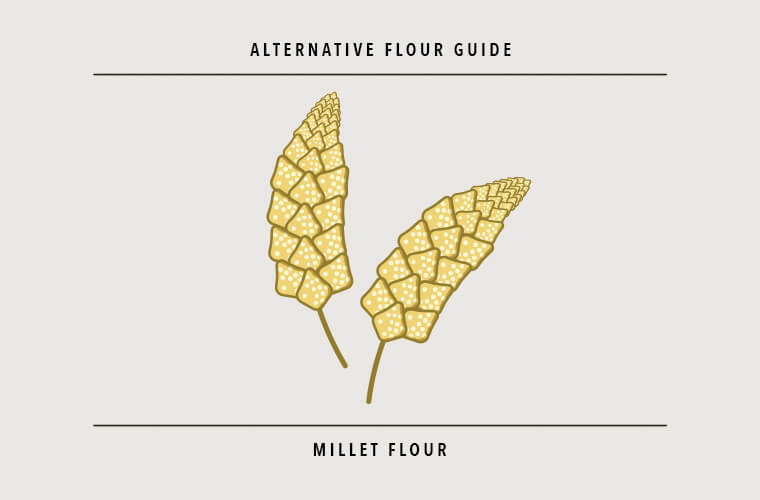
4. Millet flour
Why you need it: Millet has been gaining popularity recently, but it's no newbie to the super-grain scene—it has been around for at least 10,000 years. It's no surprise, then, that the grain has more nutritional benefits than your average flour. "[Millet is] high in protein, fiber, and the minerals iron, phosphorous, manganese, magnesium, and copper," explains Taylor-Tobin—not bad for adding some extra nutritional oomph to your baked goods!
When to use it: "Millet has grassy notes, and a little bit of bitterness," Taylor-Tobin describes, adding that she often chooses to balance it out with oat flour and sweet rice flour in an all-purpose blend (use one-third of a cup of each for every cup of flour). It's slightly similar in flavor to corn flour, though, so you'll want to pair it with lighter flavors like honey, berries, and dairy. Taylor-Tobin often chooses millet for her pastries and pie doughs, pointing to the flour's delicate, smooth texture that she loves so much.
Expert tip: Since millet has a slightly bitter flavor, cap your usage at 30 percent of the total flour in any recipe to avoid overpowering the flavor.
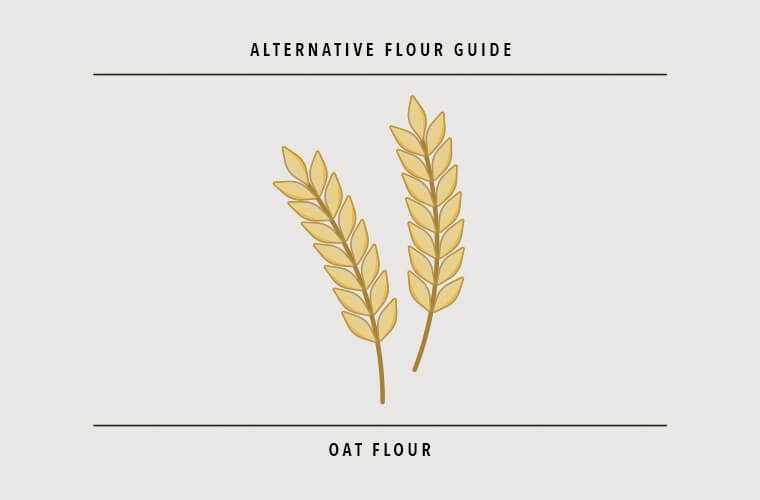
5. Oat flour
Why you need it: Oat flour is about as close as you'll get to common flour when nixing gluten, with a soft texture that's easy to work with and a taste that's similar to whole wheat flour, Taylor-Tobin explains. Plus, it's high in fiber and contains a vegetarian, legume-like protein called globulin, which actually mimics the role that gluten plays in regular flour—creating a light, fluffy texture and allowing baked goods to rise.
When to use it: Oat flour is excellent for pie dough—pizza crusts, even!—but make sure to balance out the oat with another gluten-free flour to avoid a dense and crumbly texture.
Expert tip: Blend it with millet flour and sweet rice flour for a DIY all-purpose flour replacement, adding one-third of a cup of each for every cup of flour that a recipe calls for.
This post was originally published on December 14, 2016. Updated on August 30, 2019.
For savory gluten-free dinner inspo, try these Instant Pot recipes and chicken fingers that your inner child will love.
Loading More Posts...
